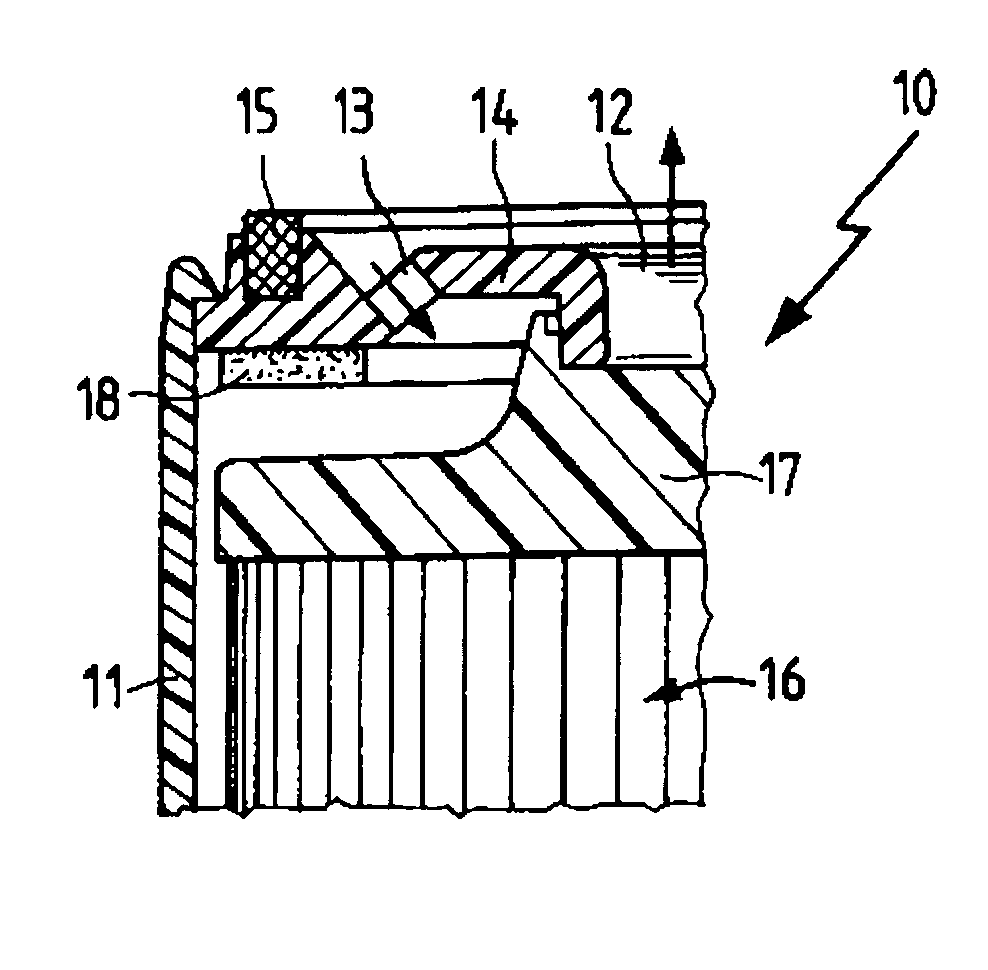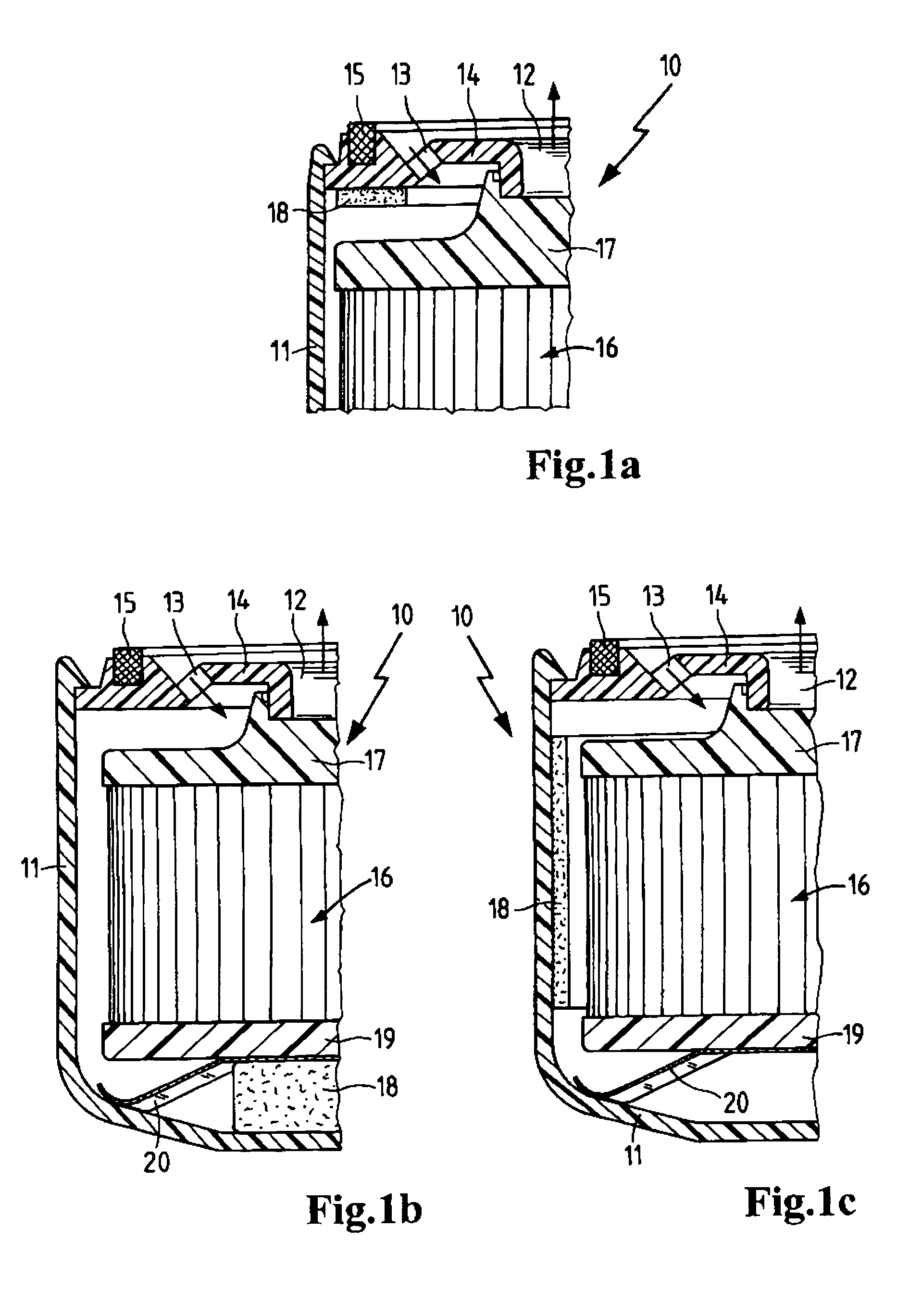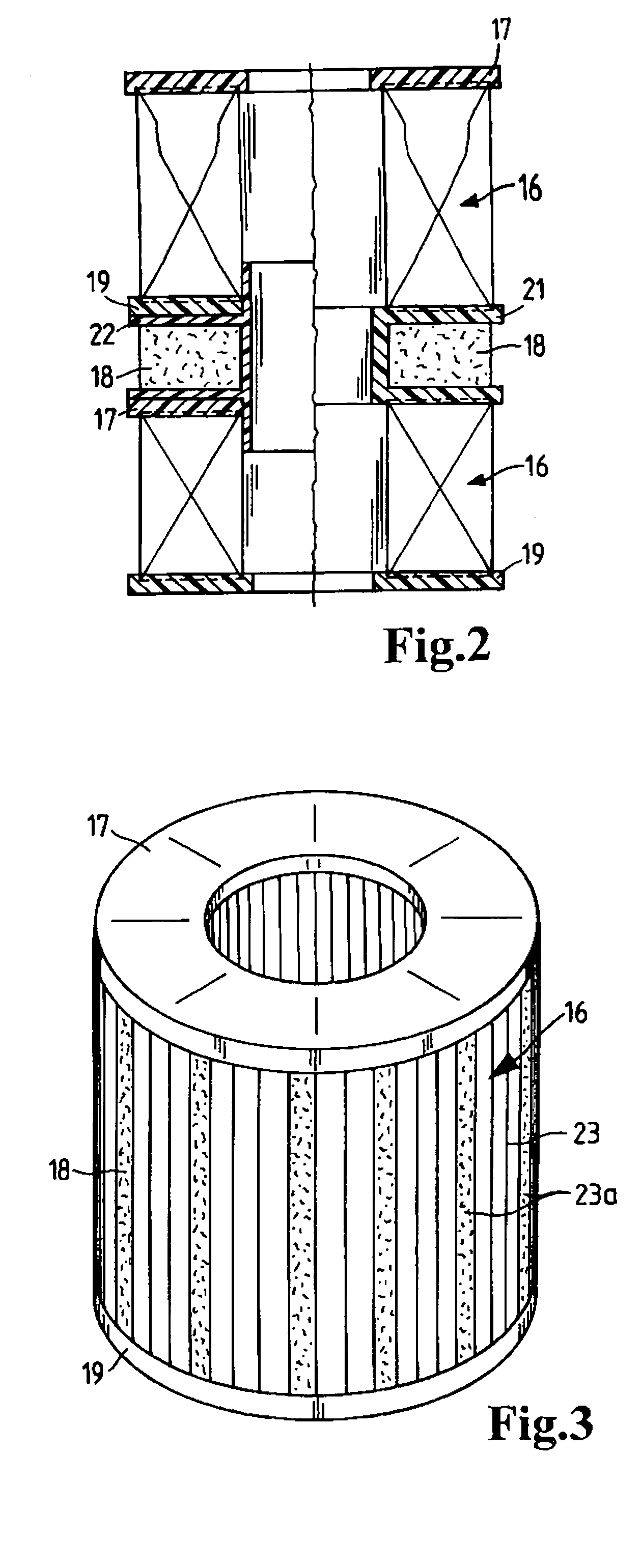Additive dispensing filter apparatus
a filter apparatus and additive technology, applied in the direction of filter cartridges, filtration separation, separation processes, etc., can solve the problems of high and very cost-intensive design complexity to achieve effective addition of additive to liquid circulation, inability to release additive, and inability to completely know the effect of oil circulation effect, etc., to achieve the effect of reducing temperature, reducing the decomposition rate, and increasing the release of additiv
- Summary
- Abstract
- Description
- Claims
- Application Information
AI Technical Summary
Benefits of technology
Problems solved by technology
Method used
Image
Examples
Embodiment Construction
[0050]FIGS. 1a, b and c show an inventive replaceable filter in a sectional view. FIG la shows a part of the filter device 10 with a housing 11, whereby an outlet 12 and an inlet 13 are arranged in a housing cover 14 which is undetachably joined to the housing 11. The housing cover 14 has a peripheral quadrilateral gasket 15 which ensures an axial sealing of the filter device 10 in cooperation with a connecting flange (not shown here). The inlet 13 and the outlet 12 are separated by a filter medium 16 with an end disk 17 mounted at the top end. The filter medium 16 is a hollow cylindrical paper filter element with stellate pleating. The end disk 17 ensures the separation of the crude side from the clean side in the upper area, providing a seal radially and axially. In the lower area of the housing 14, an additive 18 is arranged circumferentially in the form of a ring; because of its gelatinous substance, it has both dimensional stability and elasticity and is glued to the housing co...
PUM
| Property | Measurement | Unit |
|---|---|---|
| permeable | aaaaa | aaaaa |
| cylindrical shape | aaaaa | aaaaa |
| diameter | aaaaa | aaaaa |
Abstract
Description
Claims
Application Information
 Login to View More
Login to View More - R&D
- Intellectual Property
- Life Sciences
- Materials
- Tech Scout
- Unparalleled Data Quality
- Higher Quality Content
- 60% Fewer Hallucinations
Browse by: Latest US Patents, China's latest patents, Technical Efficacy Thesaurus, Application Domain, Technology Topic, Popular Technical Reports.
© 2025 PatSnap. All rights reserved.Legal|Privacy policy|Modern Slavery Act Transparency Statement|Sitemap|About US| Contact US: help@patsnap.com



